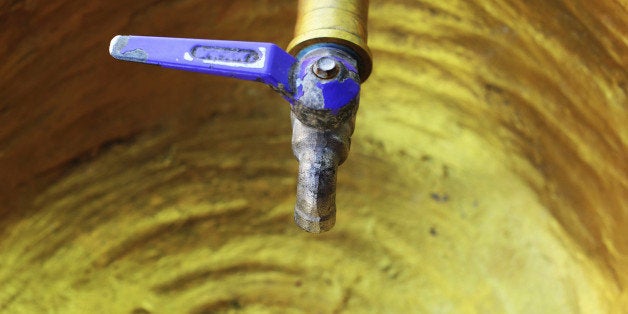
Direct potable reuse projects, or putting treated municipal wastewater directly back into the same city's drinking water supply, are creating headlines all over the Southwest and especially in Texas where the City of Big Spring is already doing it, and Wichita Falls just started. Is this a brave new world -- a sign that the historic drought is collapsing our civilization? Are there not better solutions to severe water shortages? On the contrary, direct potable reuse would be an improvement over the current situation for several cities in Texas.
We all learn about the hydrologic cycle in elementary school -- rain falls, runoff drains directly or through groundwater into rivers that eventually reach the oceans, evaporation returns water to the atmosphere, and rain falls again. Back 2,000 years ago, it might have been that simple, but as the rising population has increasingly concentrated in cities, the water cycle has become more complex. Cities take water from rivers or wells, contaminate it as they use it, and send it to wastewater treatment plants for sufficient cleanup to return to the rivers, where it heads downstream to the next city. Regulations under the Clean Water Act define "sufficient cleanup" to maintain ecosystem health: Keep fish alive under low flow, or drought, conditions, and limit nutrients (phosphorus and nitrogen) to prevent rampant plant and algae growth.
A recent study by the University of Arizona showed several drinking water treatment plants in the U.S. get their influent from water sources that, under low flow conditions, consist of 100 percent wastewater from upstream cities. In other words, the wastewater discharges from one city are not diluted at all by clean "natural" water when the next city takes it for their drinking water source. Even under average flow conditions, some drinking water plants use water containing more than 20 percent wastewater. Of the 11 drinking water plant intakes in the U.S. with the highest percentage of such de facto reuse, eight are in Texas. So, many Texans are now, probably unknown to them, ingesting water that was recently municipal wastewater. Yes, natural processes in those rivers help clean the water, but those processes are generally slow, so the natural cleanup is minimal when the travel time between cities is only days.
Simply put, if you want to drink very clean water, direct potable reuse will likely provide higher quality water than many drinking water plants currently produce now. Why? Because those slow, natural river processes will be replaced by highly engineered, well-monitored, advanced treatment processes that remove contaminants much better. The first operating direct potable reuse plant, in Big Spring, receives treated wastewater and uses multiple sophisticated treatment processes before sending it to the existing drinking water plant for yet more treatment. Those processes include membrane ultrafiltration to remove particles down to extremely small size and amounts, reverse osmosis to remove all molecules larger than the smallest inorganics to a very high degree, and an "advanced oxidation process" (a combination of UV light and hydrogen peroxide) to oxidize remaining contaminants and inactivate pathogens. Furthermore, the Texas Commission on Environmental Quality limits the amount of water that can be recycled to 20 percent of the total drinking water influent. The key to success is monitoring to detect any operational failure rapidly so that recycling can be suspended.
The philosophy behind providing safe drinking water has always been a "multi-barrier" approach, which has meant starting with a clean water source, providing adequate treatment to remove particles, disinfecting the water to inactivate remaining pathogens, and maintaining a residual disinfectant to protect the water from the plant to people's homes. The analysis by the Arizona researchers makes clear that such clean water sources rarely exist in an arid climate, especially today. When our multi-barrier approach cannot include a clean water source, the advanced treatment that comes with direct potable reuse is a better barrier than the pretenses that our rivers are clean or that natural processes clean the water well. So, for the best drinking water, I'll take direct potable reuse with its advanced treatment, multiple barriers and extensive water quality monitoring. You should too.